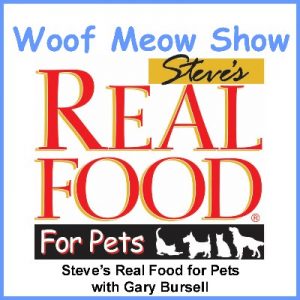<A version of this article was published in the July 2014 issue of Down East Dog News>
Last month Don discussed how to evaluate the companies making the pet food. This month he discusses how to evaluate individual brands and formulas within a company.
After selecting companies you are comfortable with, the next thing a pet parent should do is to look at the individual foods produced by a company. In this day and age most pet food company’s manufacture and market multiple lines or brands of food. For example, the Natura Pet Food Company, which is currently owned by Proctor & Gamble, manufactures 5 brands of pet food: California Natural, Evo, Healthwise, Innova, and Karma. They do this to meet specific needs (hypoallergenic and grain-free formulas), marketing niches (organic) or various price points (good, better or best).
Pet food companies recognize that budget does matter to pet parents, and they try to offer a food brand in multiple price categories. Unfortunately, because people focus on the price per bag and price per pound, instead of the cost per feeding, these categorizations aren’t always logical. It really can save you money if you learn how to calculate the true feeding cost of a pet food (click here to read: Determining True Pet Food Costs). You will often discover that the actual difference in the feeding cost between the categories is often negligible and the food that costs more per bag actually is a better value.
When choosing pet foods to offer in our store or for personal use, we also look for a brand that offers multiple, adult formulas, with different protein sources that support our philosophy of dietary rotation (click to read Why Rotating Diets Makes Sense). A great example of this would be PureVita’s formulas in which they offer chicken, duck, bison, salmon, or turkey formulas. When we first started talking about dietary rotation many years ago, we quickly became the pariah of many food companies and some local veterinarians. Interestingly, now some food companies also actively promote rotation and many veterinarians recognize that it is not harmful and makes sense.
Other factors to consider are the availability of a pet food brand. The small family owned companies we discussed in my last column typically and intentionally choose to market their products through independent, locally-owned retailers who are knowledgeable and passionate about sharing their knowledge of pet nutrition. They also typically offer a money-back guarantee – if you are not satisfied with the food return it to the retailer for a full refund. They also often offer frequent buyer programs that help that retailer build customer loyalty. Remember when you buy from a locally-owned store you are getting expertise and service and you are also helping your community.
In my next column I’ll discuss looking at the labeling on pet food, specifically the ingredients used.
______________________________________________________________________________
Don Hanson is the co-owner of the Green Acres Kennel Shop (greenacreskennel.com) in Bangor. He is a Bach Foundation Registered Animal Practitioner (BFRAP), Certified Dog Behavior Consultant (CDBC), Associate Certified Cat Behavior Consultant (ACCBC) and a Certified Professional Dog Trainer (CPDT-KA). He produces and co- hosts a weekly radio show and podcast, The Woof Meow Show heard on The Pulse AM620 WZON and streamed at http://www.wzonradio.com/ every Saturday at 9 AM. A list of upcoming shows and podcasts of past shows can be found at www.woofmeowshow.com. Don also writes about pets at his blog: www.words-woofs-meows.com.
©2015, Donald J. Hanson, All Rights Reserved <Click for Copyright and Use Policy>


